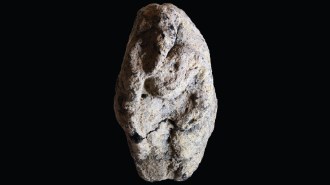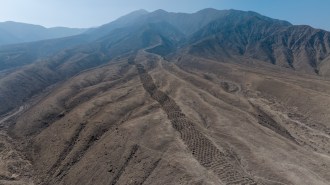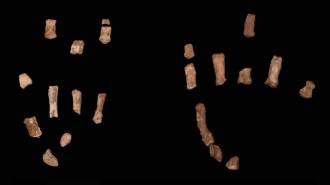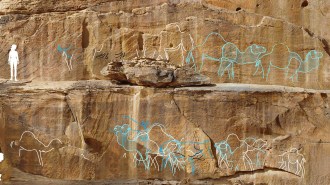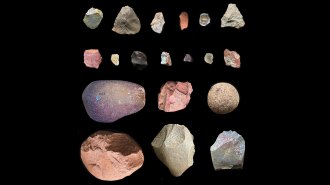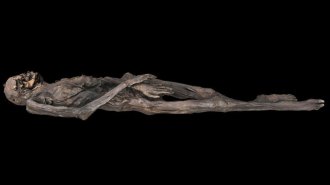Ancient ash flow brought sudden death
When volcanic death swept down the slopes of Mount Vesuvius into the city of Herculaneum in A.D. 79, it arrived so quickly that some residents didn’t even have time to flinch.

Researchers have excavated the skeletons of 80 victims who had sought shelter from the eruption in boathouses along the beach. The postures of these victims are relaxed and show no sign that these Herculaneans perceived immediate danger, says Alberto Incoronato, an archaeologist at the University of Naples Federico II in Italy. He and his colleagues describe their findings in the April 12 Nature.
When the devastating eruption occurred, Herculaneum had at least 20,000 residents, says James Higginbotham, an archaeologist at Bowdoin College in Brunswick, Maine. The city was a seaside hotspot filled with high culture and then-modern architecture. “It was a pretty snazzy town,” says Higginbotham.
It was, however, a snazzy town located just 4 kilometers from a previously dormant volcano. The early stages of Mount Vesuvius’ most famous eruption spewed smoke, ash, and other searing materials 33 km straight up into the sky. About 12 hours after the unexpected eruption began, the first of several pyroclastic flows–clouds of steam and ash that spill down the slopes of a volcano at high speed–swept through Herculaneum like a blast from a furnace.
Incoronato and his colleagues combined forensic science and advanced thermodynamics to conduct a high-tech postmortem of the Vesuvius victims. Herculaneum sat atop a 20-meter cliff that faced the sea, says Incoronato. Most people had fled their homes before the first pyroclastic flow swooshed through town, swirled over the cliff, and surged into the boathouses.
The ash cloud that entombed the victims there vaporized everything but their bones. Archaeologists found intact skeletons lying in relaxed positions on the floor or just a few centimeters above it, slightly buoyed by the fluid ash that had rapidly hardened in place. The consistent lack of evidence for voluntary reactions of self-protection or for contortions of agony among the victims suggests that they died instantly. In less than 1 second, the intense heat caused their muscles to involuntarily contract, which twisted their hands and feet into odd positions.
The heat of the ash cloud was so fierce that it cracked the enamel on victims’ teeth and blackened the inside of their skulls. These signs indicate a temperature of about 500C, which the researchers backed up with analysis of tiles unearthed outside one of the houses. Incoronato says that the 500C ash would have cooled suddenly, especially in the boathouses where many victims were crowded together. This probably explains why the most severe effects of the heat appear on teeth and bones unprotected by thick layers of fat and other tissue, he adds.
One eyewitness account of Vesuvius’ eruption in A.D. 79 survives, but that observation was from a distance, notes Higginbotham. About a quarter of Herculaneum has been excavated by archaeologists, but only the bones from the boathouses are left to speak of what actually happened to people when a seething cloud of ash entombed a vibrant Roman city.
“This research corroborates the speed and the intensity of the volcanic surges that nobody in town lived to talk about,” says Higginbotham.

